“My opinion is that we be kind to children and be kind to seniors and take the potion like they used to take in ancient Greece, and step over quietly. We can’t go back. They won’t leave us alone. They’re now going back to tell more lies, which means more congressmen. And there’s no way, no way we can survive.”
~Jim Jones
========================

========================

1626 – With the 120-year construction completed, St. Peter’s Basilica was dedicated in Rome by Pope Urban VIII on the 1,300th anniversary of the dedication of the original basilica.
By tradition, the basilica is the burial site of its namesake, Saint Peter, one of the twelve apostles of Jesus Christ.
There are over 100 tombs within St. Peter’s Basilica, including 91 popes (the most recent interment was Pope John Paul II in 2005).
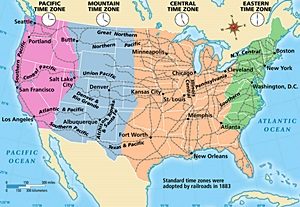
1883 – American and Canadian railroads began using four continental time zones to end the confusion of dealing with thousands of local times.
Until 1883, the entire country operated on a chaotic system of varying local times determined by the position of the sun.
Authorities in each city would signal the time by which people would set their clocks and watches. Local time varied by a minute or more from one side of New York City to the other. When it was 12 noon in New York, it was 12:12 in Boston, 11:56 in Philadelphia, and 11:30 in Cleveland.
These differences were caused by the fact that the sun rises at different times in each city.
Rather than turning to the federal governments of the U.S. and Canada to create a North American system of time zones, the powerful railroad companies took it upon themselves to create a new time code system.
The companies agreed to divide the continent into four time zones; the dividing lines adopted were very close to the ones we still use today.
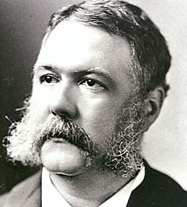
1886 – Former President Chester Alan Arthur died of complications from Bright’s Disease, a debilitating and fatal kidney ailment. He was 56.
In the words of former President Rutherford B. Hayes, Arthur’s term as president was most notable for “liquor, snobbery and worse.” Although he had been ambitious as a young man, he was considered by many of his contemporaries to have been a lazy and “foppish” president.
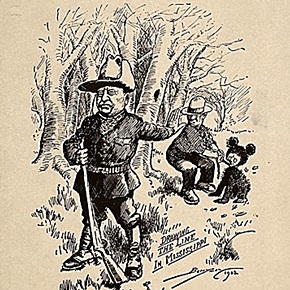
1902 – Morris Michtom, a Russian Jewish immigrant selling candy (and making stuffed animals at night) in New York City, saw a cartoon and together with his wife, invented something that still beats in the heart of a child.
The cartoon (Drawing The Line In Mississippi) by Clifford K. Berryman depicted Teddy Roosevelt having compassion for a bear at the end of an unsuccessful hunting trip in Mississippi.
The result was … The Teddy Bear.
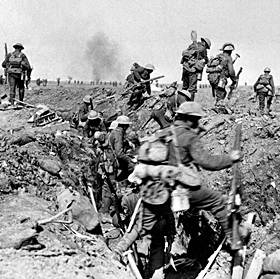
1916 – First Battle of the Somme, one of the most bitterly contested and costly battles of the First World War, ended when British Expeditionary Force commander Douglas Haig called off the battle which had started on July 1, 1916.
What Did The Allies Gain Factoid: Over the course of the battle, British and French forces took a strip of territory 6 miles wide by 20 miles long.
And what did it cost for the tiny gain of land?
The estimate of casualties on the Somme was 485,000 British and French casualties and 630,000 German.
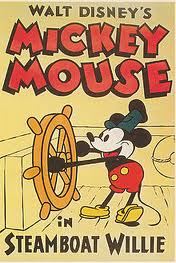
1928 – Walt Disney debuted his talking, animated cartoon, Steamboat Willie, at the Colony Theatre in New York.
The short film featured a character who had been named Mortimer. Disney changed the name to Mickey Mouse.

1932 – For the first time, a tie occurred for the Best Actor Academy Award.
Wallace Beery and Fredric March were only one vote apart so the Academy of Motion Picture Arts and Sciences ruled it a tie. Both received an Oscar at the Fifth Annual Academy Awards; Beery for his role in The Champ and March for his performance in Dr. Jekyll and Mr. Hyde and.
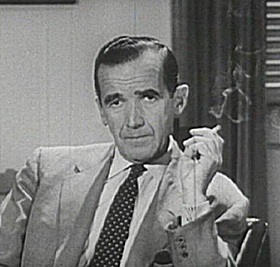
1951 – Edward R. Murrow launched one of the most highly-praised TV productions in history when See It Now debuted on CBS.
On that first program, Murrow showed a live camera shot of the Atlantic Ocean, followed by a live shot of the Pacific. He said, “We are impressed by a medium through which a man sitting in his living room has been able to look at two oceans at once.”
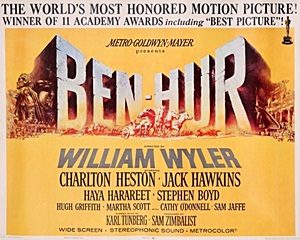
1959 – Ben Hur premiered in U.S. theaters.
The film starred Charlton Heston, Stephen Boyd, Hugh Griffith and Martha Scott.
It won eleven Academy Awards, including Best Picture, Best Director (William Wyler), Best Actor in a Leading Role (Heston), and Best Actor in a Supporting Role (Griffith).
Considered one of the highlights in the epic film, the chariot scene took five weeks (spread over three months) to film.
Casting Factoid: Several actors were offered the role of Judah Ben-Hur before it was accepted by Heston. Burt Lancaster turned down the role because he found the script boring. Paul Newman also turned it down, as did Marlon Brando, Rock Hudson and – no joke – Leslie Nielsen.
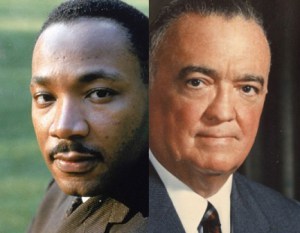
1964 – FBI Director J. Edgar Hoover told reporters that Dr. Martin Luther King, Jr. was the “most notorious liar in the country.”
for daring to suggest that the nation’s premier law enforcement agency was less than effective in protecting those fighting racism in the South.
If the flare-up between Hoover and King had ended with just words, it would have been a minor footnote in a turbulent period. But several days later a top FBI deputy, William Sullivan, apparently took it upon himself to write an anonymous letter to King, threatening to make public the civil rights leader’s sex life.
The missive, known to historians as the “suicide letter” for its suggestion that King kill himself to avoid the embarrassing revelations, was back in the news in 2014 after Yale history professor Beverly Gage found a full and uncensored copy in Hoover’s confidential files at the National Archives.
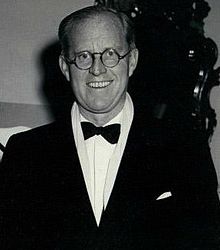
1969 – Joseph Patrick “Joe” Kennedy, Sr., former U.S. Ambassador to the United Kingdom (and the father of President John F. Kennedy, Senator Robert F. Kennedy and Senator Edward M. Kennedy), died of complications from a stroke at the age of 73.

1978 – Peoples Temple founder Jim Jones led hundreds of his followers in a mass murder-suicide at their agricultural commune in a remote part of the South American nation of Guyana.
Many of Jones’ followers ingested a poison-laced punch while others were forced to do so at gunpoint.
Congressman Leo Ryan from the San Francisco area had visited Jonestown the day before, investigating claims of abuse within the Peoples Temple.
During the visit, a number of Temple members expressed a desire to leave with the Congressman, a decision that drove Jones over the brink.
In a rambling 44-minute cassette tape, known as the “death tape,” Jones said, “How very much I’ve tried my best to give you the good life. But in spite of all of my trying, a handful of our people, with their lies, have made our life impossible. There’s no way to detach ourself from what’s happened today.”
Jones commanded everyone to gather in the main pavilion and commit what he termed a “revolutionary act.”
The youngest members of the Peoples Temple were the first to die, as parents and nurses used syringes to drop a potent mix of cyanide, sedatives and powdered fruit juice into children’s throats. Adults then lined up to drink the poison-laced concoction while armed guards surrounded the pavilion.
When Guyanese officials arrived at the Jonestown compound the next day, they found it carpeted with hundreds of bodies. Many people had perished with their arms around each other.
A few residents managed to escape into the jungle as the suicides took place, while at least several dozen more Peoples Temple members, including several of Jones’ sons, survived because they were in another part of Guyana at the time.
The final death toll that day was 918, including Congressman Ryan, three journalists and one of the Temple defectors, who all died when they were gunned down at the local airstrip at Port Kaituma.
276 those who perished were children.

1987 – A fire in the King’s Cross station in London killed 30 commuters and injured scores of others.
It was the worst fire in the history of the city’s underground rail system. Late on a Wednesday afternoon, people began to smell smoke coming from beneath one of the station’s escalators. Even though several people reported the smell to station employees, no action was taken.
At 7:50 p.m., flames were spotted beneath the escalator. By that time, it was too late. Smoke filled the station as the fire quickly spread, leaving no clear path of escape.
The London Fire Brigade arrived to find general chaos and panic; they were also faced with what one witness described as a “shock wave of fire.”

1987 – The congressional Iran-Contra committees issued their final report, saying President Ronald Reagan bore “ultimate responsibility” for wrongdoing by his aides.
After nearly a year of hearings into the Iran-Contra scandal, the joint Congressional investigating committee concluded that the scandal, involving a complicated plan whereby some of the funds from secret weapons sales to Iran were used to finance the Contra war against the Sandinista government in Nicaragua, was one in which the administration of Ronald Reagan exhibited “secrecy, deception, and disdain for the law.”

1988 – President Ronald Reagan signed the Anti-Drug Abuse Act of 1988.
Calling it a “new sword and shield” in the nation’s battle against the illegal drug epidemic, the legislation also called for a Cabinet-level drug czar who would develop and coordinate a national strategy to fight drugs and be responsible for the entire federal anti-drug budget.
In the photo above, Reagan can be seen handing the pen he used to sign the bill to First Lady Nancy Reagan. He dedicated the bill to his wife, who had led a “Just Say No” campaign among America’s youth.

1991 – Shiite Muslim kidnappers in Lebanon freed Anglican Church envoy Terry Waite after more than four years of captivity.
Waite, a special envoy of the archbishop of Canterbury, had secured the release of missionaries detained in Iran after the Islamic revolution. He also extracted British hostages from Libya and succeeded in releasing American hostages from Lebanon in 1986.
A total of 10 captives were released through Waite’s efforts before Shiite Muslims seized him during a return mission to Beirut on January 20, 1987.
During his captivity, Waite was frequently blindfolded, beaten and subjected to mock executions. He spent much of the time chained to a radiator, suffered from asthma and was transported in a giant refrigerator as his captors moved him about.
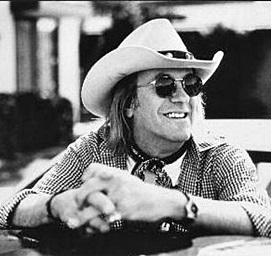
1999 – Musician Doug Sahm died of a heart attack at the age of 58.
He came to prominence as the leader of the Sir Douglas Quintet when their single She’s About A Mover became a Top 20 hit in 1965. They reached #27 on the Billboard Hot 100 in 1969 with Mendocino.
In 1989, Sahm formed the Tex-Mex supergroup, the Texas Tornados, with Freddy Fender, Augie Meyers, and Flaco Jimenez. Their first album won a Grammy for Best Mexican-American Performance for the song Soy de San Luis.
Sir Douglas Name Game Factoid: Sahm chose the group’s name in an effort to make the band seem British to benefit from the British invasion. That image had its problems, particularly because of Sahm’s Texas accent and because two of the five band members were Hispanic.
Child Prodigy Factoid: Sahm was a musical prodigy who, at an early age, began playing with a local band. He was singing on the radio at the age of five and was so gifted that he could play the fiddle, steel guitar, and mandolin by the time he was eight years old.
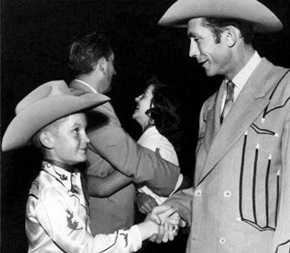
He Played With A Legend Factoid: On December 19, 1952, at the age of eleven, Sahm played on stage with Hank Williams at the Skyline Club in Austin, Texas.
It was Hank’s very last performance. He died on New Year’s Day of 1953, on the road to his next show, in Canton, Ohio.

1999 – A 59-foot-high pile (4 feet higher than authorized) of logs collapsed, killing 12 students and injuring another 27 at Texas A&M University.
The logs were to be used in a giant bonfire, continuing a tradition that began 90 years earlier.
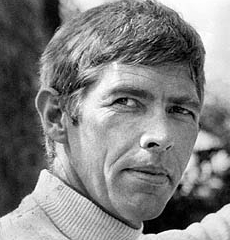
2002 – Actor James Coburn died of a heart attack at the age of 74.
He starred in The Magnificent Seven, The Great Escape, Our Man Flint, In Like Flint, Major Dundee, and Affliction, for which he won an Academy Award for Best Supporting Actor.

2017 – Malcolm Young, the co-founder, rhythm guitarist, backing vocalist and songwriter with AC/DC, died at the age of 64 after suffering from dementia for three years.
It was Malcolm who defined AC/DC’s sound. The band is, first and foremost, a rhythm machine: Malcolm’s distinctive chop was inextricable to their identity. While younger brother Angus is a thrilling soloist, Malcolm was all accent, drive and reinforcement.
Most of all, he knew when not to play. Silence – those gaps punctuating the riffs – was as vital a component of the AC/DC sound as ear-splitting volume. As his brother George, the band’s co-producer once put it, “It’s the stops what rocks.”
Think of the long list of AC/DC riffs which made use of those “stops”: Highway To Hell, Whole Lotta Rosie, You Shook Me All Night Long, It’s A Long Way To The Top, Dirty Deeds Done Dirt Cheap, and For Those About To Rock.
Those are just a few of the songs – all of them co-written by Malcolm – that have made AC/DC a juggernaut for over 40 years.
Compiled by Ray Lemire ©2019 RayLemire.com / Streamingoldies.com. All Rights Reserved.
Love that picture of President and Mrs. Reagan.
So did I, Patty 🙂
So good to have you back Ray —- best way to start the day is reading these pieces of history ….. I walk away with an interest in learning more – and I can’t think of a better compliment to the author …. Rock this day my friend …. I hope your time away was enjoyable….
– and I am waiting to see (as many others are) what caused pigs to fly …..
Thank you, Barbara.
I managed to accomplish a couple of things during the week off, both of them leading to flying pigs. 😉
Honest, it will be explained very soon. 🙂
Thanks Ray, that was a very good read. A nice way to start the day, knowing a thing or two!!!!!
Thank you, Karen. It is always nice to learn something new. 🙂
This was one busy day in history! I learned so many things not necessarily what happened but the background about it that I may have never known without your good input and research. Thank you for all the hard work that you put into these lessons. Enjoy reading them very much when I find a time to get in here.
Sandy, thank YOU for taking the time to read it!
Holey Moley what a day! Fascinating about the time zones..never knew that, imagine having the time change from town to town! Shocking about Hoover and Dr. King but I guess it shouldn’t be. Reagan a bad guy, wow what we forget…only remember the good stuff. But politically it has only gotten worse! But we won’t go there. Jim Jones….terrifying!
Thank you, as always.
Donna, thank YOU!
Ahh, inspiration for the Teddy Bear….I still have my childhood teddy bears. They have lived a long life thanks to Dr. Pepper! 🙂 <3 Welcome back, Teach!
Dr. Pepper wasn’t too handy with a needle and thread but he did put a lot of love into his work. ❤
And thank you, it’s good to be back!